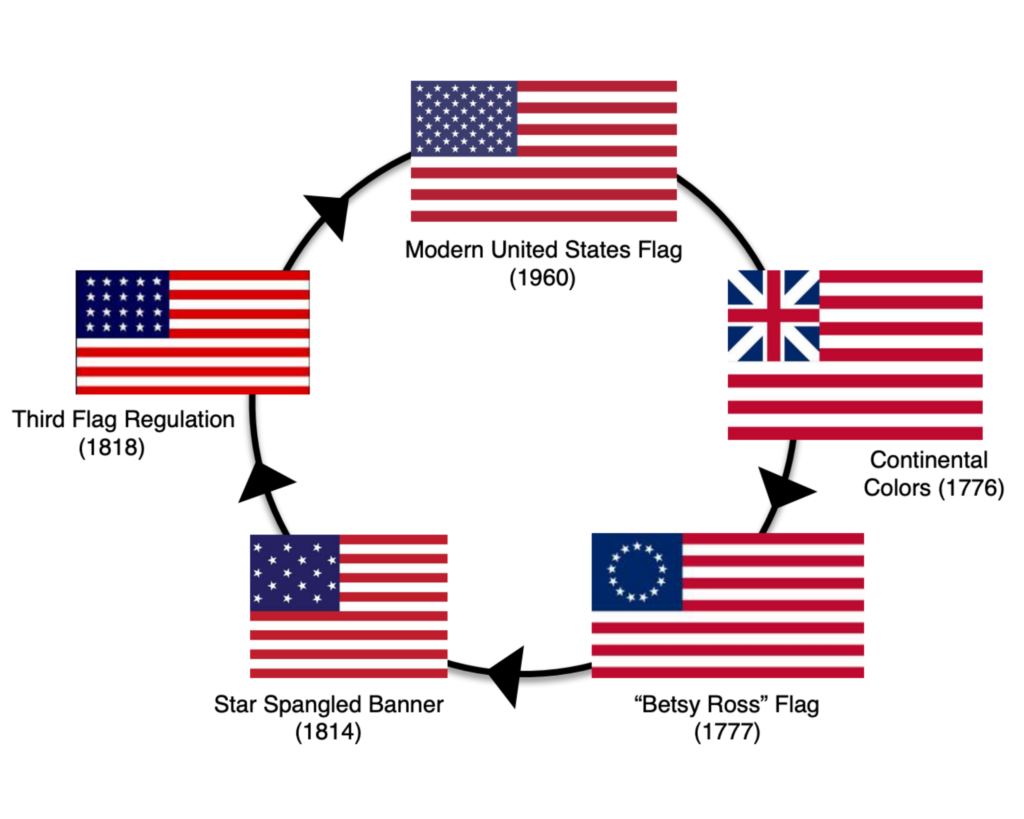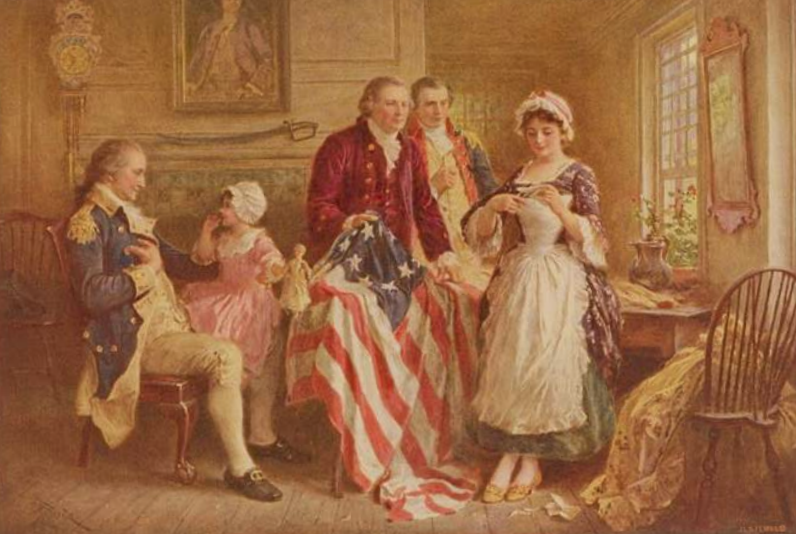Information from the Naval History and Heritage Command and the National Museum of the United States Navy.
What is Flag Day and why does the United States celebrate it on June 14?
On this date in 1777, the Second Continental Congress adopted the design for its first national flag. While this did happen on June 14, 1777, the United States did not recognize this day as a holiday until 1885, when a Wisconsin teacher taught his students to celebrate the Flag’s birthday. Hearing about this, a gentleman named William Kerr started the American Flag Day Association. Years later, President Woodrow Wilson officially announced that June 14 will forever be a national holiday to celebrate the history and importance of the United States Flag.
On July 4, 1776, this flag became the first national flag of the United States. John Paul Jones, the Father of the U.S. Navy, is believed to have raised this flag in 1775 as the Navy banner when Commodore Esek Hopkins assumed command of the new Navy. An English spy reported that one of Commodore Hopkins’ ships was flying “English colours, but more striped.” This flag was also raised on Prospect Hill, near Cambridge, Massachusetts, on January 1, 1776, as the flag of the Continental Army. The basis of the design is uncertain. Never officially adopted, the flag was replaced by the emblem described in the Continental Congress resolution of June 14, 1777.
The Legend of Betsy Ross
No one knows who really made the first official American flag. According to tradition, the credit for the Stars and Stripes belongs to Betsy Ross. One of her grandchildren claimed that General George Washington, accompanied by Colonel George Ross and Robert Morris, brought a rough sketch of a flag to her Philadelphia upholstery shop in June 1776. Washington supposedly asked her to make a copy of it for the nation that was about to declare its independence. She suggested a few changes, such as the use of a five-pointed star rather than a six-pointed one, and sewed the flag in her back parlor. Betsy Ross was indeed a real person, and she did make flags for the government. It is most likely that she made the one called the Cambridge flag, or Continental Colors. That flag was raised at Somerville, Massachusetts, on January 1, 1776, as the flag of the Continental Army. Although the popular legend about the American flag has never been verified, the Betsy Ross home at 239 Arch Street is preserved as the flag’s birthplace. The story was first told in 1870 by William Canby, who said that he had heard it directly from Ross, his grandmother. Other Ross descendants supported the claim, and no contrary evidence was ever presented.
In total, the United States has had 27 official National Flags, and 25 of them these flags have featured the stars and stripes. Below are the five major phases of the history of the United States Flag.

Flag Etiquette
To honor the Flag, the United States has a series of very important rules and regulations all citizens must follow when handing a flag.
1. The flag should be flown only from sunrise to sunset. Upon special occasions, however, it may be displayed at night with a spotlight shown on it.
2. The flag should be displayed on all days when the weather permits, particularly on national and state holidays and on historic and special occasions.
3. The flag should be displayed in or near every polling place on election days.
4. The flag should be displayed during school days in or near every schoolhouse.
5. The flag should always be hoisted briskly and lowered slowly and ceremoniously.
6. When displayed with another flag against a wall from crossed staffs, the flag of the United States should be on the right (its own right) and its staff should be in front of the staff of the other flag.
7. When a number of flags are grouped and displayed from staffs, the flag of the United States should be at the highest point or at the center or the first flag at the right of the center.
8. When flags of two or more nations are displayed, they should fly from separate staffs of the same height and the flags should be approximately equal in size. (International usage forbids the display of the flag of one nation above that of another nation in time of peace.)
9. When displayed over the middle of the street, as between buildings, the flag should be suspended vertically with the union to the north in an east-and-west street or to the east in a north-and-south street.
10. The flag should be displayed at the unveiling of a statue or a monument, but it should not be used as a covering. Blue, white, and red bunting may be used as a drapery.
11. Flags flown from fixed staffs are placed at half-staff to indicate mourning. Only by the order of the president may crepe streamers be affixed to flagstaffs or spearheads in a parade.
12. When used to cover a casket, the flag should be placed so that the union is at the head and over the left shoulder. The flag should not be lowered into the grave or be allowed to touch the ground. The casket should be carried foot first.
13. When displayed from a staff in a church or public auditorium, the flag of the United States of America should hold the position of honor at the speaker’s right as he or she faces the congregation or audience. Any other flag so displayed should be placed on the left of the speaker or to the right of the audience.
14.When a flag is no longer fit for display, it should be destroyed in a dignified way, preferably by burning. A flag may be washed or dry-cleaned.

